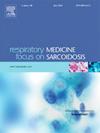Innovative dual-pump regulation in veno-arteriovenous extracorporeal membrane oxygenation: A Single‐center experience
IF 3.5
3区 医学
Q2 CARDIAC & CARDIOVASCULAR SYSTEMS
引用次数: 0
Abstract
Purpose
To evaluate the safety and efficacy of veno-arteriovenous extracorporeal membrane oxygenation (V-AV ECMO) with a secondary centrifugal pump to control blood flow in return pathways as an alternative to the conventional Hoffman clamp.
Materials and methods
We conducted a retrospective review of all adult patients who underwent V-AV ECMO in our hospital from January 1, 2022, to December 31, 2023. Data, including demographic characteristics, comorbidities, and ECMO-specific information, were systematically extracted from electronic medical records.
Results
Five patients, three (60 %) of whom were male, underwent V-AV ECMO. Four patients were initially placed on veno-venous extracorporeal membrane oxygenation (V-V ECMO), and one was placed on veno-arterial extracorporeal membrane oxygenation (V-A ECMO). The mean duration of V-AV ECMO support was 14.4 ± 11.4 days. Ventilator support was reduced, and fewer vasoactive drugs were administrated. Hemoglobin and platelets tended to decrease in all five patients, but D-dimer did not increase. No patients experienced active bleeding, and one patient developed oxygenator thrombosis. Two patients survived to discharge.
Conclusion
V-AV ECMO using a secondary centrifugal pump is feasible and likely safe without increasing the risk of ECMO-related complications such as hemolysis, thrombocytopenia, blood clot formation, or clotting factor consumption. Future prospective studies are warranted to validate these findings and optimize ECMO management protocols.
静脉-动-静脉体外膜氧合的创新双泵调节:单中心体验
目的评价静脉-动-静脉体外膜氧合(V-AV ECMO)辅助离心泵控制回流通道血流作为传统Hoffman钳的替代方案的安全性和有效性。材料与方法回顾性分析2022年1月1日至2023年12月31日在我院接受V-AV ECMO的所有成年患者。数据,包括人口统计学特征、合并症和ecmo特异性信息,系统地从电子病历中提取。结果5例患者行V-AV ECMO,其中3例(60%)为男性。4例患者采用静脉-静脉体外膜氧合(V-V ECMO), 1例采用静脉-动脉体外膜氧合(V-A ECMO)。V-AV ECMO支持平均持续时间为14.4±11.4天。减少呼吸机支持,减少血管活性药物的使用。5例患者的血红蛋白和血小板均有降低的趋势,但d -二聚体没有升高。无一例患者出现活动性出血,1例患者出现氧合器血栓形成。两名患者存活出院。结论采用二次离心泵进行v - av ECMO是可行且安全的,不会增加溶血、血小板减少、血栓形成或凝血因子消耗等ECMO相关并发症的风险。未来的前瞻性研究有必要验证这些发现并优化ECMO管理方案。
本文章由计算机程序翻译,如有差异,请以英文原文为准。
求助全文
约1分钟内获得全文
求助全文
来源期刊

Respiratory medicine
医学-呼吸系统
CiteScore
7.50
自引率
0.00%
发文量
199
审稿时长
38 days
期刊介绍:
Respiratory Medicine is an internationally-renowned journal devoted to the rapid publication of clinically-relevant respiratory medicine research. It combines cutting-edge original research with state-of-the-art reviews dealing with all aspects of respiratory diseases and therapeutic interventions. Topics include adult and paediatric medicine, epidemiology, immunology and cell biology, physiology, occupational disorders, and the role of allergens and pollutants.
Respiratory Medicine is increasingly the journal of choice for publication of phased trial work, commenting on effectiveness, dosage and methods of action.
 求助内容:
求助内容: 应助结果提醒方式:
应助结果提醒方式:


